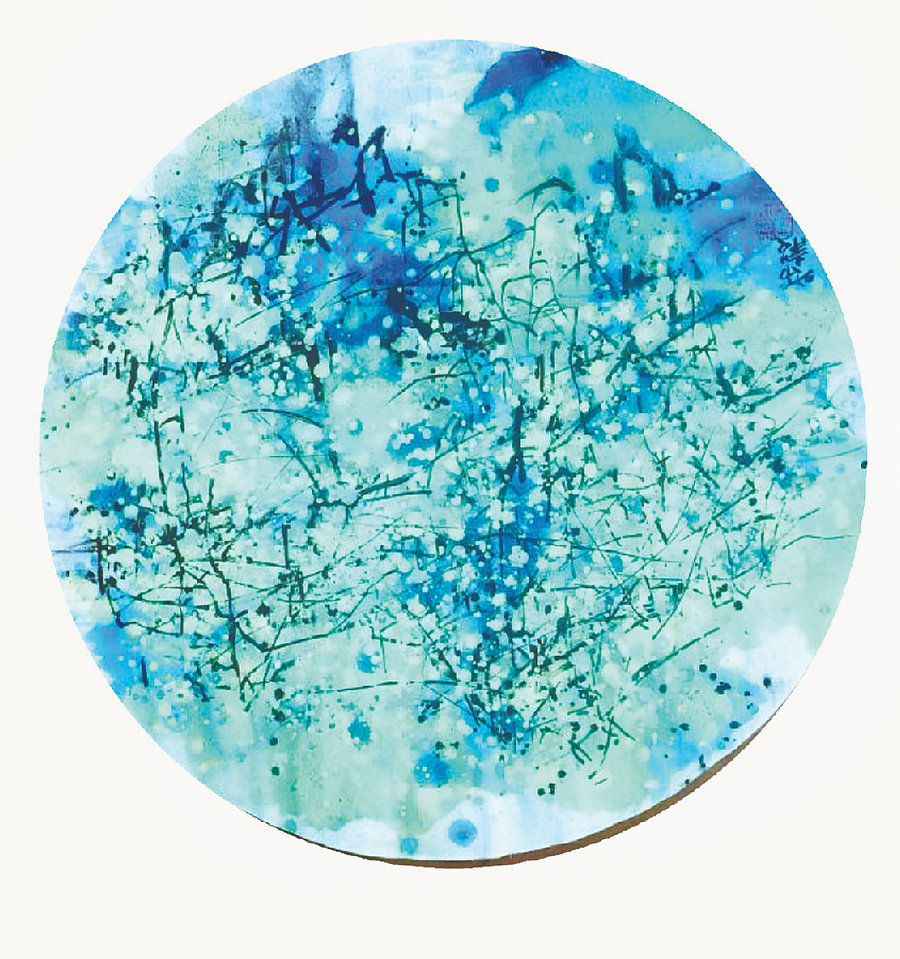

Fusion of influences
There's a penetrating soul in Chai's art that strikes a chord among viewers, but they cannot even start to describe what the emotional echoing is precisely, probably because her artistic language, sensibility and style are too culturally storied in depth and width to grasp.
Boiling Chai's artistic style down into a category or genre does little justice because it distills the artistic finesse of the East, primarily China and Japan, and the technical and aesthetic influences of the West that she had spent more than four decades trying to absorb and assimilate. If asked to name the most profound influences on her artistic lexicon, Chai would give credit to three legendary figures from China — Fu Baoshi, Zhang Daqian, Ren Bonian — and France's Claude Monet.
Spearheading the New Chinese Painting Movement dedicated to modernizing the traditional Chinese style, Fu Baoshi (1904-65) vouched for spontaneity, audacity and improvisation in landscape ink painting by splattering and throwing ink or paint onto the canvas. It is this "throw-it-against-the-wall-and-see-what-sticks" artistry and his dexterity with paintbrushes that made Chai sit up and take notice in her early art career.
"Instead of using ink-soaked brushes, Fu applied and slithered brushes with dry and tough tips against the paper to create a slightly granular and coarse texture, rendering the mountain ridges abrasive, stoic and grandiose," she says, adding she's astonished by such a novel execution of brushes in Chinese painting, which surprisingly imbued the natural landscape with a human-like temperament.